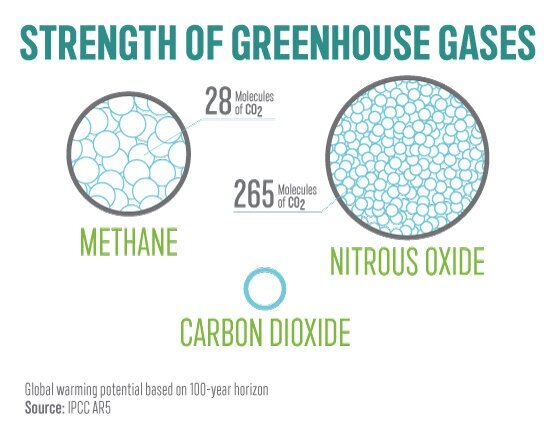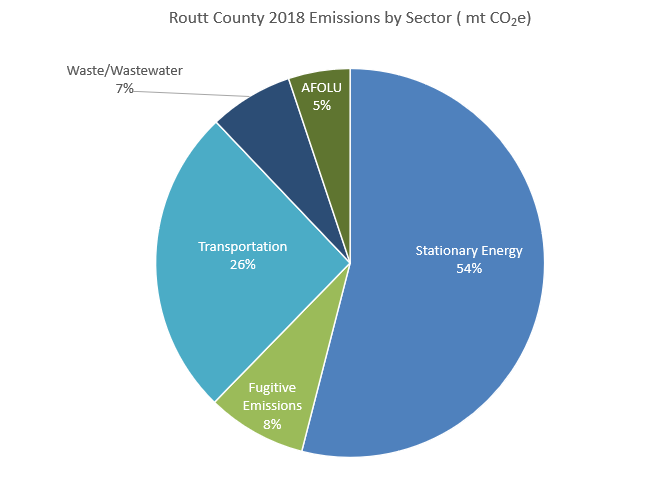Resources.
Routt County Resources
Greenhouse Gas Analysis
There is broad scientific consensus that significantly reducing our greenhouse gas emissions in the coming years will be essential to avoiding massive impacts from climate change. Global warming occurs when greenhouse gas (GHG) emissions are released into Earth’s atmosphere and absorb infrared radiation from the sun and trap it in our atmosphere – a phenomenon referred to as the ‘greenhouse effect’. There are a number of greenhouse gases that contribute to climate change, including carbon dioxide, methane, nitrous oxide, and several more. To understand the full impact of each gas, emissions are usually accounted for in metric tons of CO2 equivalent (mt CO2e), where each gas is assigned a global warming potential in units compared to one unit of CO2.


Current GHG Emissions in Routt County
The 2018 Greenhouse Gas Emissions Inventory showed Routt County emissions, including the City of Steamboat Springs, totaling 693,367 mt CO2e. That’s the same amount of emissions as 150,000 passenger cars driven for a year! Stationary energy sector emissions from commercial and residential buildings comprise the largest source of greenhouse gas emissions within Routt County (54%) followed by transportation (26% in Routt County). Stationary energy emissions include emissions from electricity, natural gas, and propane used in buildings as well as diesel used in generators. Fugitive emissions (includes leakage of natural gas, oil and gas wells, and active coal mines) comprised eight percent of Routt County’s emissions, followed by waste and wastewater emissions at seven percent. The remaining emissions came from the agriculture, forestry, and other land use (AFOLU) sector, with five percent of overall emissions for Routt County. The largest AFOLU sources of emissions are methane emissions from livestock as well as biomass burning (i.e., wildfires).
Without any actions taken to mitigate climate change, it is projected that Routt County will decrease emissions by 26% by 2050 from the baseline year of 2005. The sector that contributes the most to this decrease is the stationary energy sector; this is largely driven by utility commitments to increase the amount of renewable energy in the electricity supplied to the community. As emissions from the stationary energy sector decrease with the greening of the grid (i.e., more renewable energy), the transportation sector becomes the largest source of emissions for Routt County by 2050.



